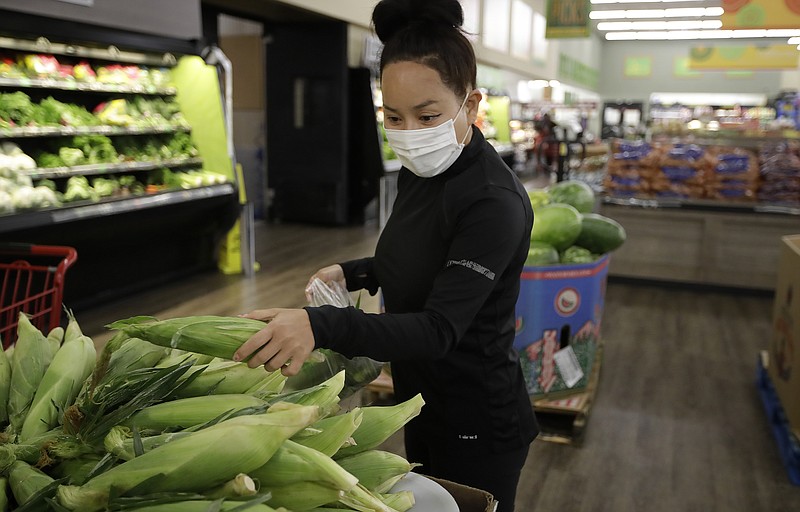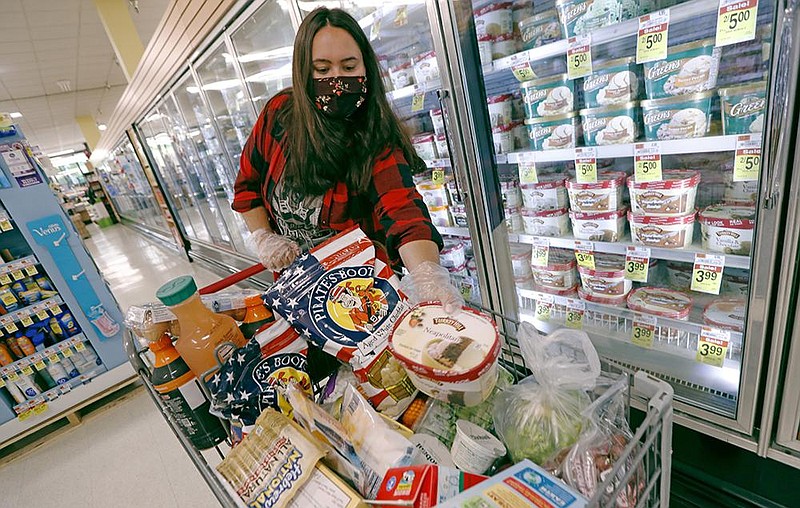NEW YORK -- There were the two-hour, unpaid waits outside supermarkets when San Francisco first started to lock down, on top of the heavy shopping bags that had to be lugged up numerous flights of stairs.
And yet even after signing up for several apps, 39-year-old Saori Okawa still wasn't making as much money delivering meals and groceries as she did driving for ride-hailing giant Uber before the pandemic struck.
"I started to juggle three apps to make ends meet," said Okawa, who recently reduced her work hours after receiving unemployment benefits. "It was really hard, because at that time I could not afford to stay home because I had to pay rent."
Okawa is one of an estimated 1.5 million so-called gig workers who make a living driving people to airports, picking out produce at grocery stores or providing child care for working parents. Theirs had already been a precarious situation, largely without safeguards such as minimum wage, unemployment insurance, workers compensation and health and safety protections.
[Gallery not loading above? Click here for more photos » arkansasonline.com/76gigs/]
But with the pandemic pummeling the global economy and U.S. unemployment reaching heights not seen since the Great Depression, gig workers are clamoring for jobs that often pay less while facing stiff competition from a crush of newly unemployed workers also attempting to patch together a livelihood -- all while trying to avoid contracting the coronavirus themselves.
U.S. unemployment fell to 11.1% in June, but that could worsen after a surge in coronavirus cases has led states to close restaurants and bars again.
Marisa Martin, a law school student in California, turned to Instacart when a state government summer job as a paralegal fell through with a hiring freeze. She said she enjoys the flexibility of choosing her own hours but hopes not to have to turn to gig work in the future. The pay is too volatile -- with tips varying wildly and work sometimes slow -- to be worth the risk of exposure to the virus, she said.
"We are not getting paid nearly enough when we're on the front lines interacting with multiple people daily," said Martin, 24, who moved in with her parents to save money.
Alexandra Lopez-Djurovic, 26, was a full-time nanny in a New York City suburb when one of the parents she works for lost her job while the other saw his hours cut.
"All of a sudden, as much as they want me to stay, they can't afford to pay me," she said. Her own hours were reduced to about eight per week.
Lopez-Djurovic placed an ad offering grocery delivery on a local Facebook group. Overnight, she got 50 responses.
[CORONAVIRUS: Click here for our complete coverage » arkansasonline.com/coronavirus]
Lopez-Djurovic charges $30 an hour and coordinates shopping lists over email, offering perks the app companies don't, such as checking the milk's expiration date before choosing which size to buy. Still, it doesn't replace the salary she lost.
"One week I might have seven, eight, 10 families I was shopping for," Lopez-Djurovic said. "I had a week when I had no money. That's definitely a challenge."
It's difficult to assess the overall picture of the gig economy during the pandemic since some parts are expanding while others are contracting. Grocery delivery giant Instacart has brought on 300,000 new contracted shoppers since March, more than doubling its workforce to 500,000. Uber's business fell 80% in April compared with last year while Lyft's tumbled 75%.
For food delivery apps, it's been a mixed bag. Although they are getting a bump from restaurants offering more takeout options, those gains are being offset by the restaurant industry's overall decline during the pandemic.






